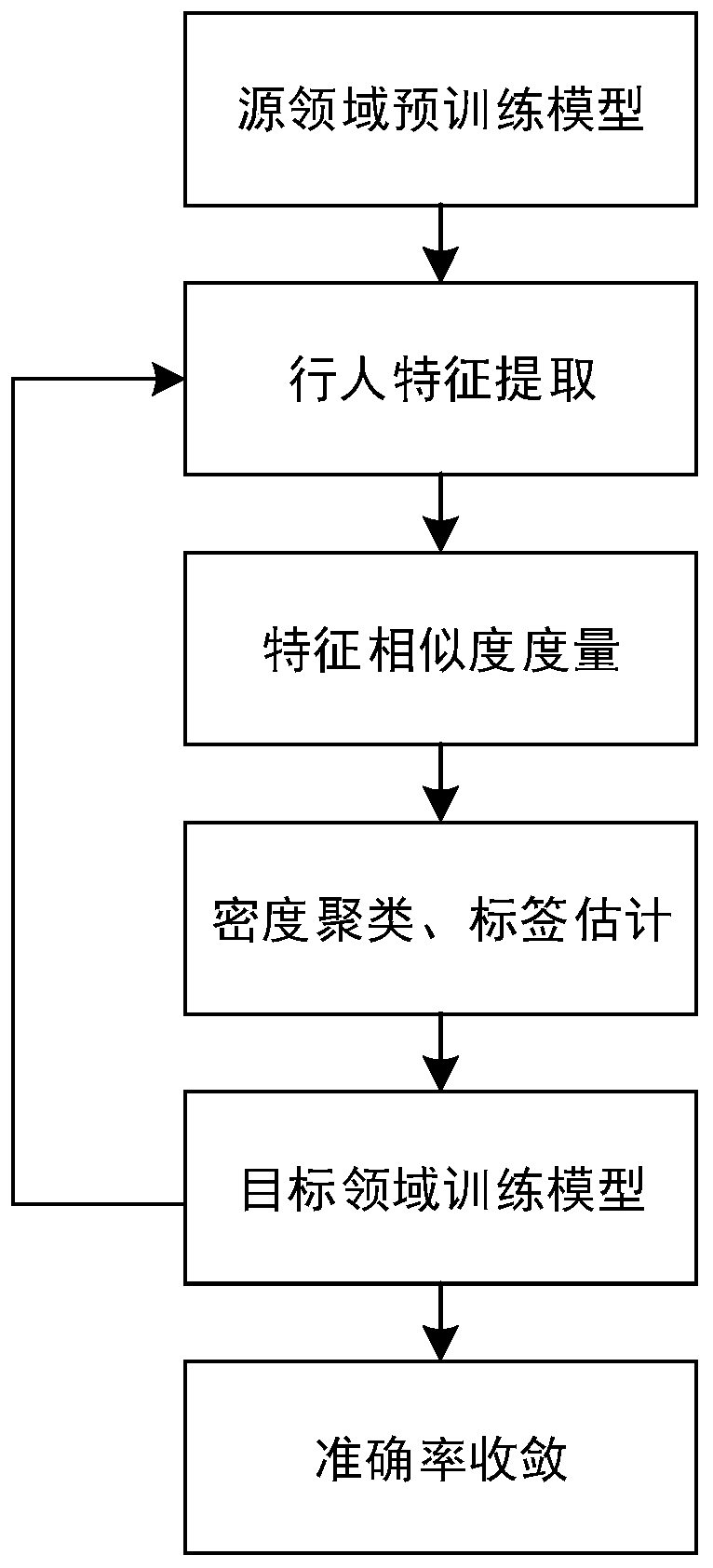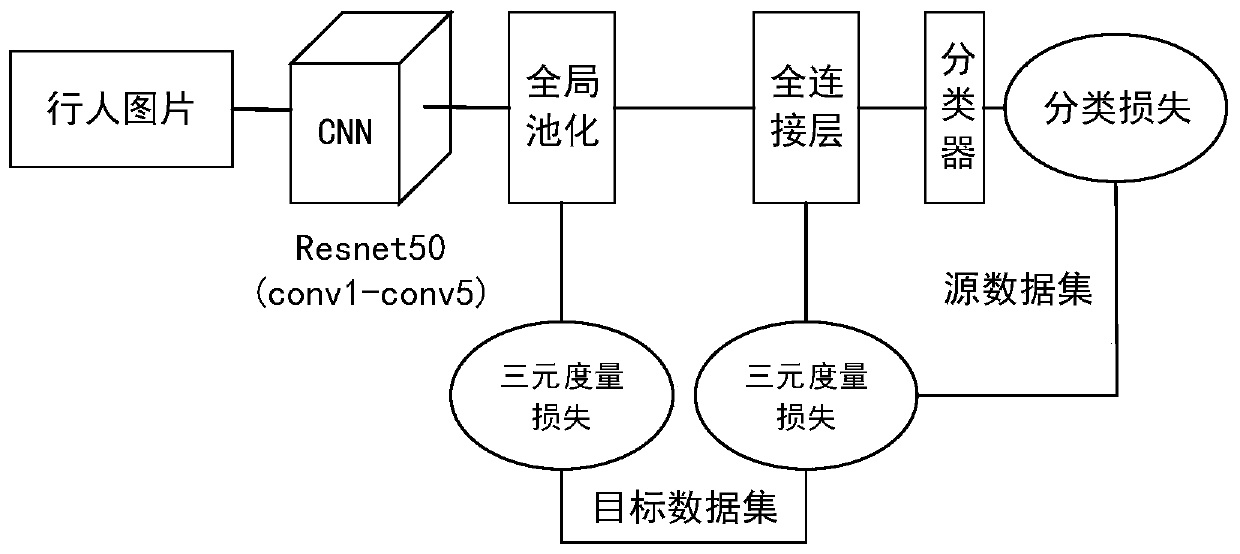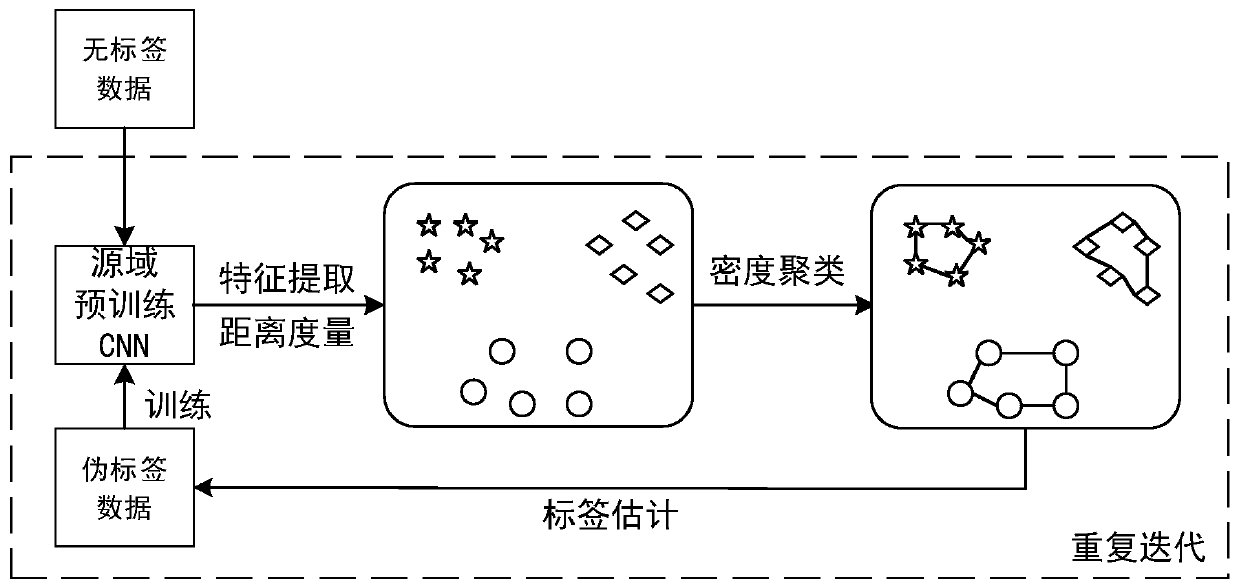Unsupervised pedestrian re-identification method based on transfer learning
A pedestrian re-identification and transfer learning technology, applied in the field of artificial intelligence and security monitoring, can solve problems such as common categories, and achieve the effect of improving accuracy, reducing errors, and improving adaptability
- Summary
- Abstract
- Description
- Claims
- Application Information
AI Technical Summary
Problems solved by technology
Method used
Image
Examples
Embodiment
[0044] Such as figure 1 As shown, the present embodiment discloses a method for unsupervised pedestrian re-identification based on transfer learning, which includes the following steps in turn: (1) source data set model pre-training; (2) target data set feature extraction and measurement; ( 3) Density clustering and label estimation; (4) Iterative training of the target data set.
[0045] (1) Source dataset model pre-training
[0046] Such as figure 2 As shown, the CNN model is selected as the Resnet model, a 2048-dimensional fully connected layer is added before the classifier of the Resnet model, and the number of categories of the classifier is modified to the number of identities of pedestrians in the source data set.
[0047] Labeled source dataset (N s is the total number of pictures in the source data set) is input to the Resnet model for forward propagation, and the 2048-dimensional pedestrian features are output in the fully connected layer. The cross-entropy lo...
PUM
 Login to View More
Login to View More Abstract
Description
Claims
Application Information
 Login to View More
Login to View More - R&D
- Intellectual Property
- Life Sciences
- Materials
- Tech Scout
- Unparalleled Data Quality
- Higher Quality Content
- 60% Fewer Hallucinations
Browse by: Latest US Patents, China's latest patents, Technical Efficacy Thesaurus, Application Domain, Technology Topic, Popular Technical Reports.
© 2025 PatSnap. All rights reserved.Legal|Privacy policy|Modern Slavery Act Transparency Statement|Sitemap|About US| Contact US: help@patsnap.com



